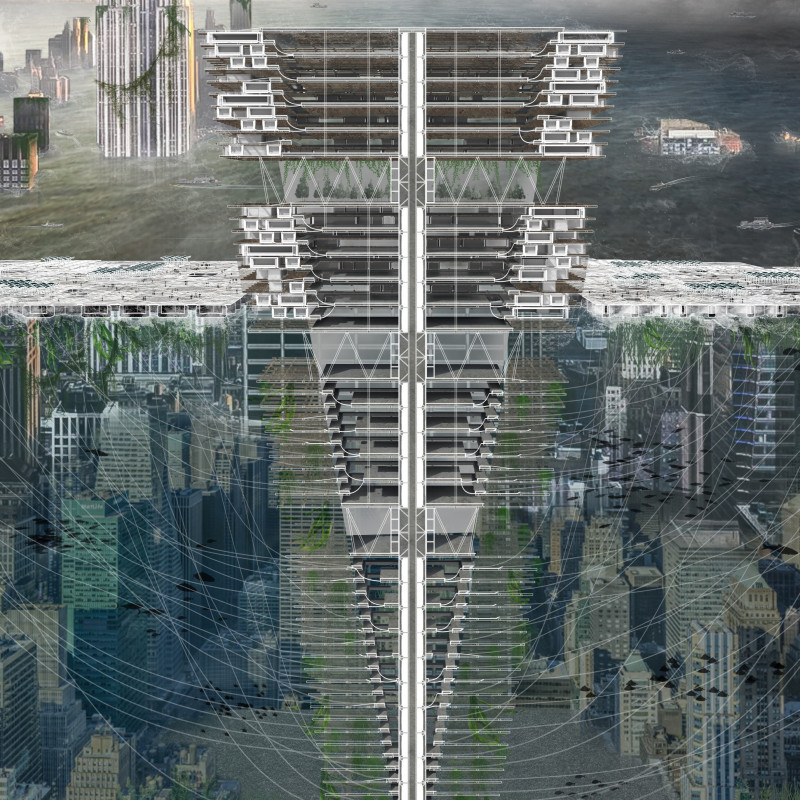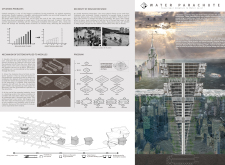5 key facts about this project
The Skyscraper Adaptive to Water Level (SAWL) is designed to meet the challenges of global warming and its effects, especially rising sea levels. It is situated in coastal areas where communities face increasing threats from flooding. The project aims to create safe places for residents through a design that allows individual living units to float and adapt to changing water levels, ensuring a resilient way of living in these vulnerable areas.
Evacuation Mechanism
A key aspect of SAWL is its evacuation system, which allows residential modules to react quickly to rising waters. Wires wrapped around a central core are used to facilitate the detachment of these modules when necessary. Sensors monitor water levels and activate the release of the wires. When flooding occurs, this process enables the units to lift above potential inundation. After the floodwaters recede, the modules can return to their original positions, maintaining continuity for the residents.
Modular Connectivity
In addition to safety features, SAWL incorporates a docking system that connects the individual residential units together. This feature allows the modules to form communal areas, which serve as shelters during emergencies. The design prioritizes community resilience, allowing families to stay in their coastal surroundings while making effective use of combined spaces during extreme weather events.
Buoyancy and Stabilization
To ensure the modules remain stable in water, gyrostabilizers are utilized. These devices help maintain balance as the units float on the rising water. When detached, the modules can unfold a flat base to enhance buoyancy, allowing them to stay afloat even in challenging conditions. This approach combines knowledge from maritime technology with urban living solutions, facilitating adaptation to the realities of climate change.
The design emphasizes lightweight and durable structures that are essential for coastal living. While specific materials are not detailed, the focus on buoyancy suggests an intention to use components that support the modules' floating capabilities while resisting environmental pressure.
Each module's flexibility supports a practical architectural response to the risks posed by rising sea levels. The arrangement of units can create a unified community space that serves as a refuge and resource for families during floods, helping to ensure safety in a world where climate disruptions are becoming more common.



















































